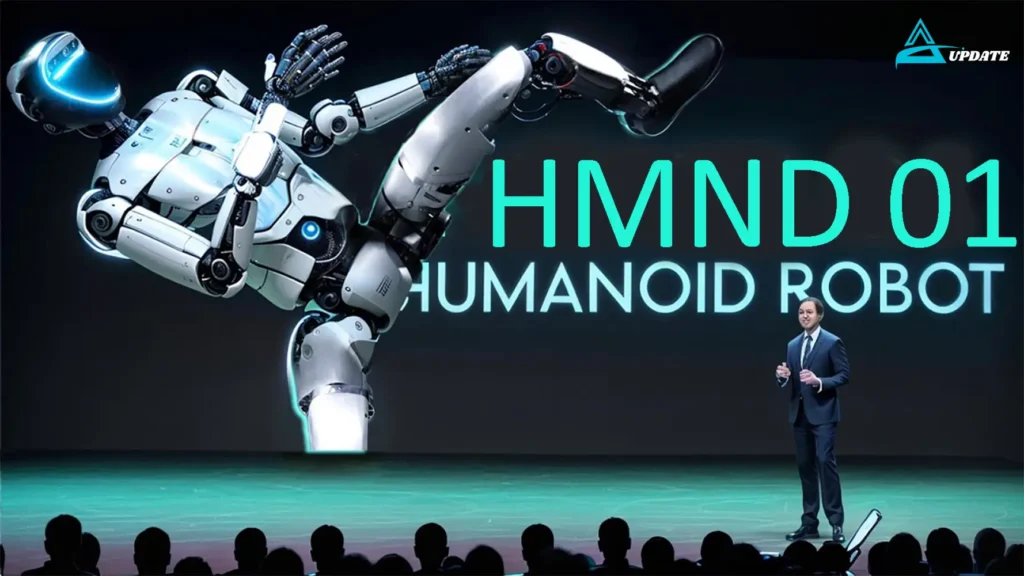Introduction to the Future of Humanoid AI
The world of artificial intelligence and robotics is evolving at an unprecedented pace, and two of the most revolutionary creations in the field are the HMND 01 and Una Robots. These humanoid robots are designed to push the boundaries of what AI-powered machines can achieve, from advanced cognitive abilities to seamless human interaction. Their unveiling marks a significant leap in the AI industry, setting new standards for robotic intelligence, automation, and efficiency.
HMND 01: The Pinnacle of AI-Powered Humanoids
Unmatched Design and Engineering
The HMND 01 humanoid robot stands as a testament to cutting-edge robotic engineering. Developed with state-of-the-art machine learning algorithms and an advanced neural network, it can process real-time data and respond intelligently to various stimuli.
- Human-Like Dexterity:
With high-precision sensors and actuators, HMND 01 can perform complex tasks requiring delicate hand movements and coordination.
- Facial Recognition and Emotional Intelligence:
The robot integrates deep learning facial recognition technology to detect emotions and adapt its responses accordingly.
- Self-Learning Capabilities:
Powered by a self-learning AI model, HMND 01 continuously improves its interactions by analyzing past engagements and user preferences.
Real-World Applications
The HMND 01 is designed to function in various industries, offering high efficiency in sectors such as:
- Healthcare:
Assisting in patient care, rehabilitation, and elderly support.
- Customer Service:
Enhancing user experiences in retail, banking, and hospitality.
- Education:
Acting as an interactive assistant for students, enabling better engagement in learning environments.
- Manufacturing and Automation:
Aiding in precision-based assembly lines and automation processes.
Una Robots: The New Face of AI Companionship
A Blend of Intelligence and Empathy
Unlike traditional humanoid robots, Una Robots are designed to bridge the gap between AI and human companionship. Built with an advanced conversational AI engine, Una robots can engage in meaningful interactions and understand complex human emotions.
- Adaptive Communication Skills:
With a natural language processing (NLP) system, Una robots communicate fluently in multiple languages.
- Personalized User Experience:
The robot learns from user interactions and adapts its responses to suit individual preferences.
- Realistic Expressions and Movements:
Advanced facial expression synthesis allows Una to exhibit emotions, making it more relatable and engaging.
Key Use Cases
The Una robot is proving to be a valuable asset in fields that require AI-human collaboration, such as:
- Elderly Care:
Offering companionship and assistance in daily activities for the ageing population.
- Mental Health Support:
Engaging in empathetic conversations to provide mental health assistance and emotional support.
- Smart Home Integration:
Assisting in home automation, entertainment, and security.
- Education and Child Development:
Acting as an AI tutor for children, helping them learn interactively and engagingly.
HMND 01 vs. Una Robots: A Detailed Comparison
Primary Function:
HMND 01 focuses on industrial and service automation, excelling in task execution, precision, and efficiency. On the other hand, Una Robots are built for AI companionship and human interaction, making them ideal for social and emotional engagement.
AI Capabilities:
While HMND 01 integrates self-learning AI for automation and real-world task execution, Una Robots prioritize emotional intelligence and adaptive conversation, providing a more personalized user experience.
Target Sectors:
HMND 01 is widely applicable in industries such as healthcare, manufacturing, retail, and education, where automation and efficiency are crucial. Meanwhile, Una Robots cater to elderly care, mental health, and smart homes, focusing on emotional connectivity and interactive engagement.
Facial Recognition and Interaction:
HMND 01 employs advanced emotion-based facial recognition to enhance human-AI collaboration. Una Robots take this further by offering realistic expressions and human-like emotions, making interactions feel more natural and immersive.
Dexterity and Movement:
HMND 01 features high-precision actuators to handle intricate physical tasks. Una Robots, in contrast, prioritize expressive gestures and facial animations to foster better emotional engagement.
The Impact of Humanoid AI on Society
The advent of humanoid robots like HMND 01 and Una Robots brings forth a new era of AI-powered assistance and automation. Their ability to enhance productivity, improve human well-being, and revolutionize service industries is undeniable. However, as with any technological advancement, there are considerations and challenges to address:

Ethical and Social Implications
- Job Displacement:
Increased automation may replace human jobs, necessitating re-skilling and adaptation.
- Privacy Concerns:
AI-powered robots collect and analyze user data, raising questions about data security and ethical AI use.
- Human Dependency:
Over-reliance on AI could impact human social skills and interactions.
The Future of AI and Robotics
Despite these challenges, the future of humanoid AI looks promising. Continued innovation in robotics, AI ethics, and data security will ensure a balanced integration of humanoid robots into society. Future developments could include:
- More advanced cognitive AI models for intuitive decision-making.
- Seamless integration with IoT and smart environments.
- Enhanced robotic autonomy for complex real-world applications.
Conclusion:-
The launch of HMND 01 and Una Robots marks a pivotal moment in the evolution of humanoid AI. These robots are not just machines but intelligent entities capable of learning, adapting, and improving human lives. Whether in healthcare, education, customer service, or companionship, their potential is boundless. As the world embraces these game-changing innovations, we can expect humanoid robots to become an integral part of our everyday lives, driving efficiency, productivity, and human-AI synergy.

